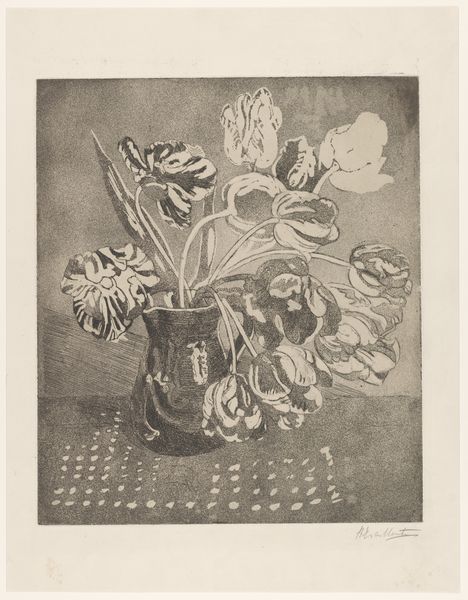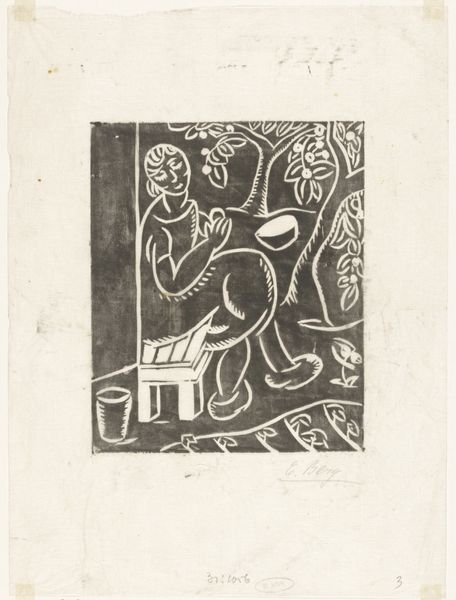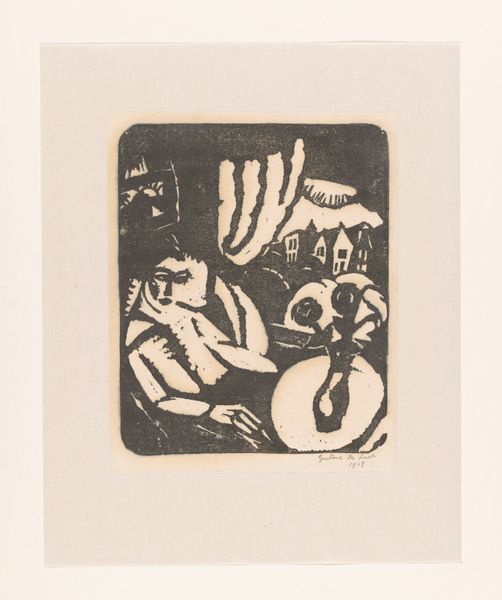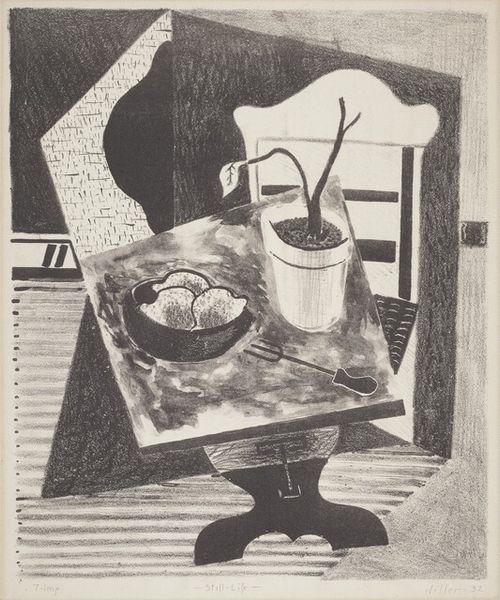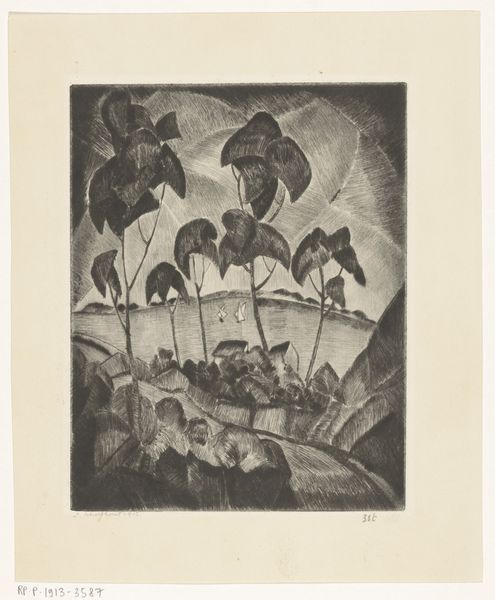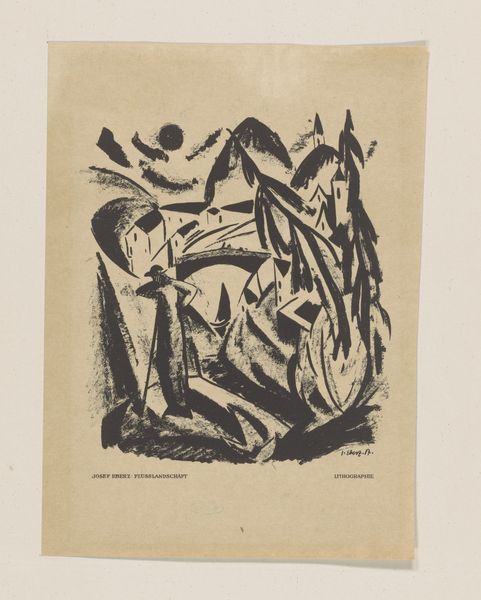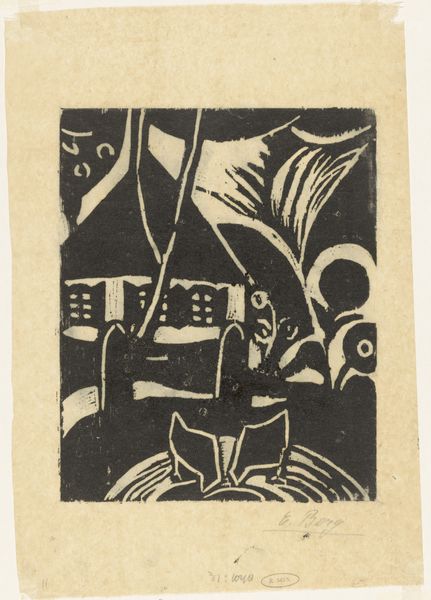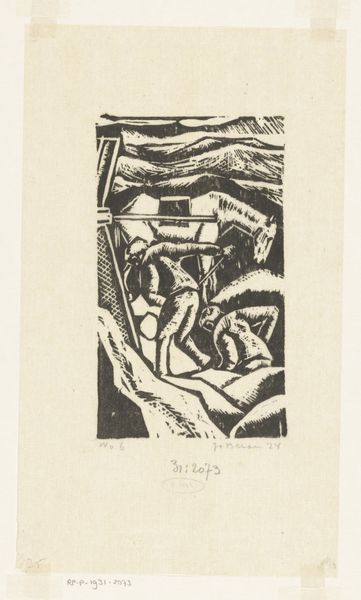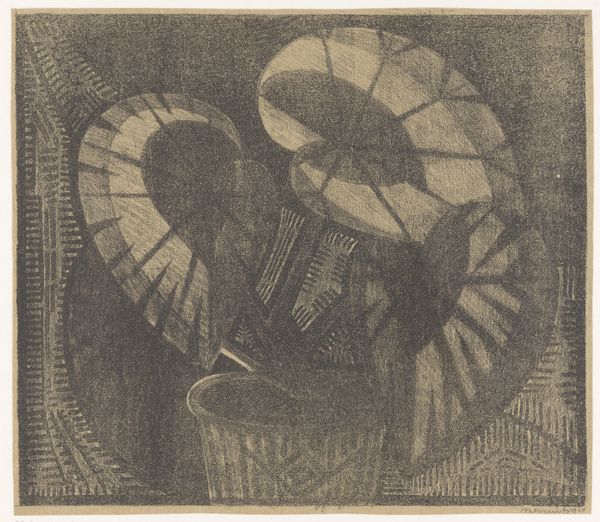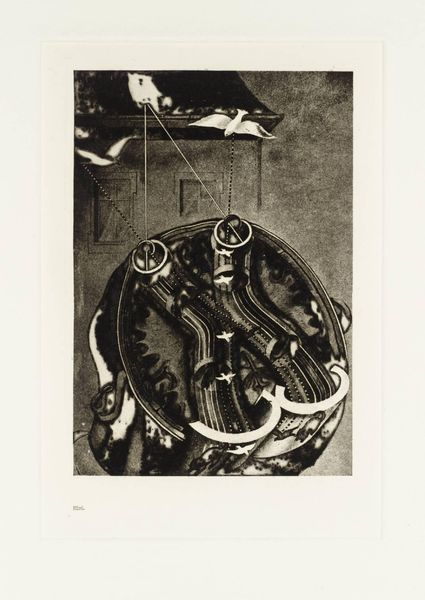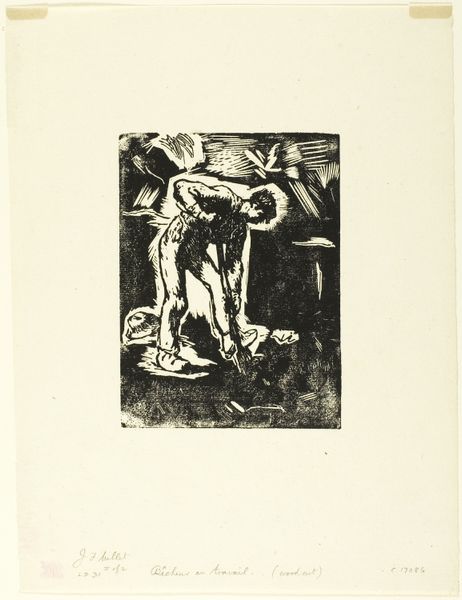
drawing, graphic-art, print, linocut, paper, ink
#
pencil drawn
#
drawing
#
graphic-art
# print
#
linocut
#
pencil sketch
#
paper
#
ink
#
pencil drawing
#
modernism
#
realism
Dimensions: height 412 mm, width 314 mm
Copyright: Rijks Museum: Open Domain
Curator: Wanda Gág created "Philodendron in raamkozijn" after 1946. It's currently held in the Rijksmuseum collection. I believe the artist used ink on paper, employing both linocut and pencil techniques to bring this print to life. Editor: My immediate reaction is its darkness – it feels so noir. The light is obscured by what appears to be a closed blind and heavy shadows define the silhouette of the leaves of this plant, this swiss cheese philodendron. Curator: Plants, especially domestic ones, have historically carried significant symbolism. Consider the Victorian language of flowers where they served as codes for concealed messages. This particular species—known also as Monstera deliciosa, and highly prized even today—can be read as a signifier of sophisticated tastes, or even aspirations to wealth. Editor: I would argue it goes even further than coded desires. The deliberate chiaroscuro speaks volumes. After 1946, remember what had just happened; war, persecution, the dropping of atomic bombs—unprecedented violence—and domesticity provided very uncertain comfort, an eerie tension between comfort and despair. It makes me think about Judith Butler's notion of precarity: this piece feels pregnant with unspoken anxieties, even when foregrounding mundane subject matter. Curator: That's compelling. The contrast reminds us of traditional associations with light and shadow – where enlightenment opposes the murkiness of the unknown. What do you make of Gág's choice of medium and her technique of combining printing with manual additions? Editor: It reinforces the sense of disquiet, wouldn't you say? Linocut is known for starkness; add a heavy reliance on contrasting tones and the soft, blurred smudges introduced by what look to be manual pencil touches create something both rigid and unresolved. You're left with something that is neither definitively hopeful nor entirely defeated, a piece deeply indicative of its post-war moment, and what came afterwards. Curator: I'm grateful for how you've illuminated its intersectional dimension. Looking again at the texture, at how Gág translated realism through graphic marks, I’m seeing how even a singular philodendron comes to tell a very layered story about what comes home after periods of collective trauma. Editor: Precisely, which only proves that even in the most ordinary objects and quietest of forms, history keeps echoing.
Comments
No comments
Be the first to comment and join the conversation on the ultimate creative platform.

